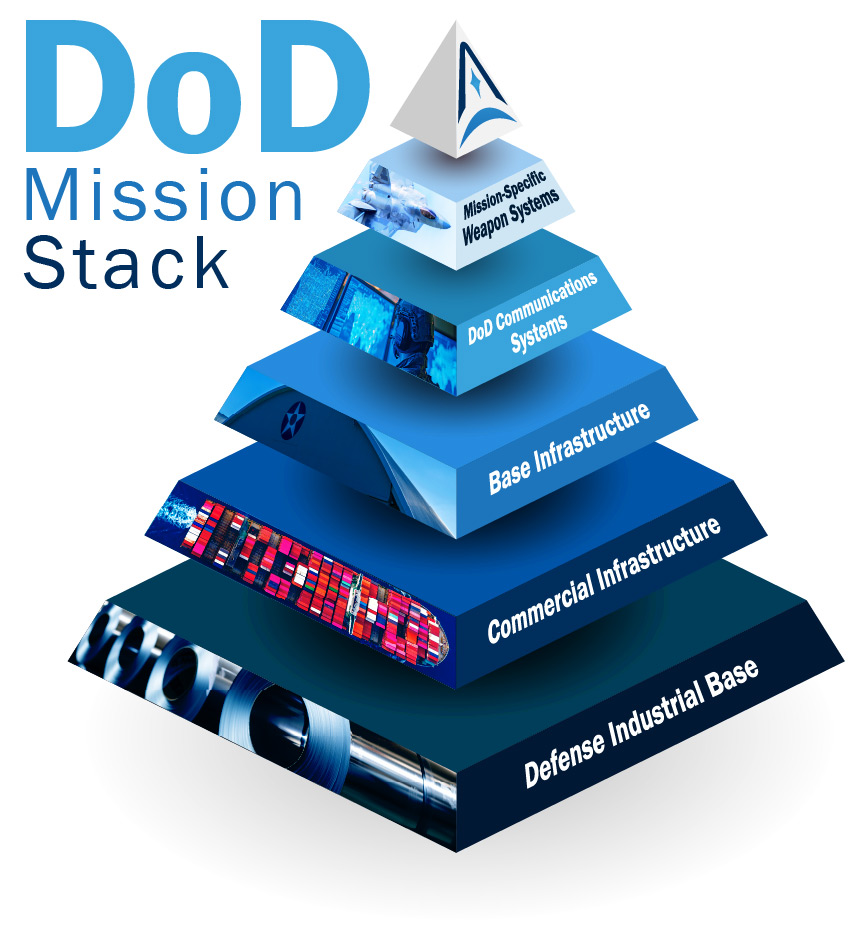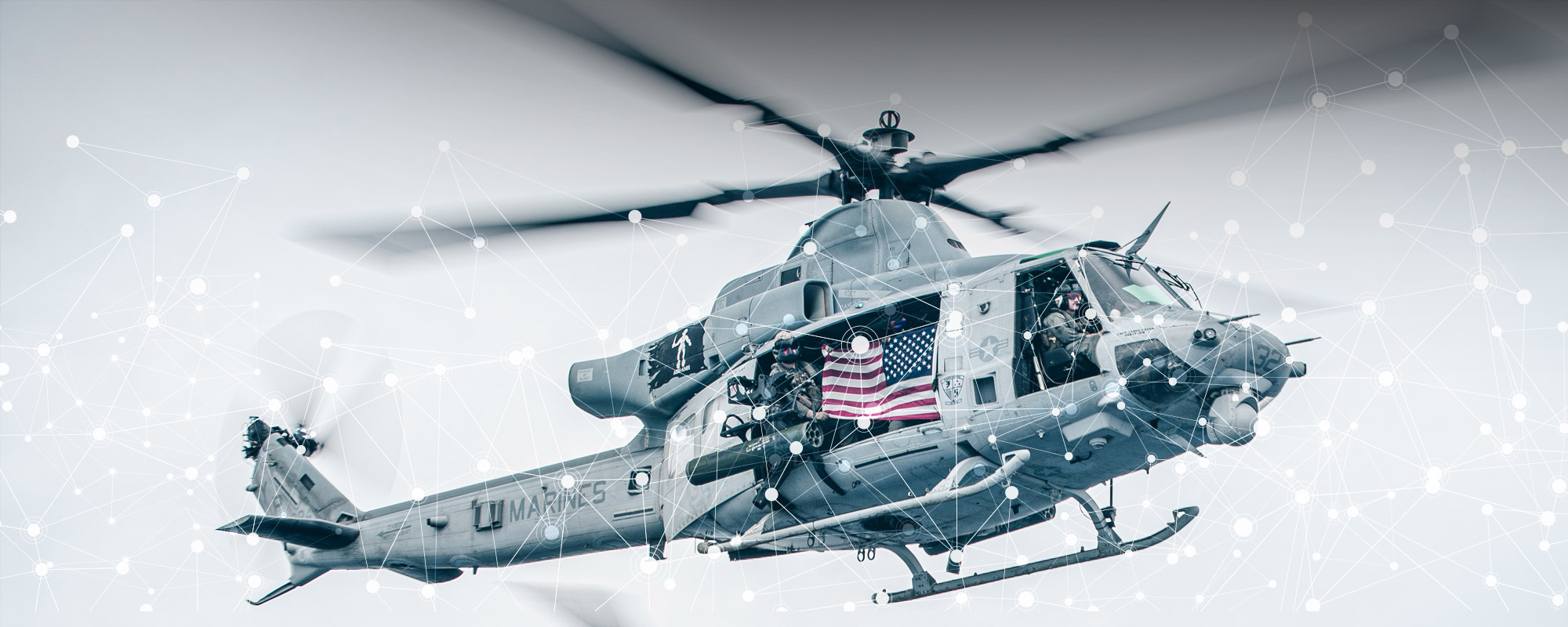
Categories: Capabilities, Software, Cyber, and Cloud Computing
Rethinking Cybersecurity: A Strategic Shift for the DoD
- Alexandria, VA | June 25, 2025
As cyber threats escalate and evolve, the Department of Defense (DoD) faces the imperative of rethinking how cybersecurity is integrated into military operations. Cybersecurity must transition from being perceived as a peripheral concern—often relegated to technical support roles—to being treated as a fundamental component of strategic military operations.
Mike Farren, Strategic Growth and Business Analyst at Systems Planning & Analysis (SPA), underscores this critical need for change. Historically, cybersecurity has been viewed as an ancillary element within the broader warfighting domains of land, sea, air, and space. Officially recognized as the fifth critical warfighting domain, cyber operations still frequently remain compartmentalized, disconnected from core military functions.
The Marginalization of Cybersecurity
Farren highlights the current disconnect within the DoD regarding cybersecurity:
“Doctrinally, cyber is the fifth critical warfighting domain, alongside sea, air, land, and space. But practically, cyber is treated as ‘the other’—someone else’s problem. Whether you’re a program manager developing a system, a weapons system operator, or a combatant command, the focus tends to remain on the traditional metrics of cost, schedule, performance, and tactical implementation. Cybersecurity often falls off the radar.”
This marginalization is further demonstrated by how cybersecurity responsibilities are allocated within combatant commands. Farren explains:
“In many cases, though it is changing, cybersecurity and cyber defense are assigned to the J6 (responsible for IT and networks) rather than J3 (responsible for operations). Without a secure cyber environment, your other classic mission systems start failing or becoming degraded. At its root, cybersecurity is an operational mission. I’ve never seen a combatant command delegate defensive counter-air missions to the J6, but we tend to do that with cyber.”
This approach underscores the persistent tendency within the DoD to undervalue cybersecurity’s operational significance, treating it primarily as an IT issue rather than as an integral part of mission assurance.
One significant reason for this separation stems from the inherent differences between traditional kinetic warfare and cyber operations. Traditional warfare is tangible, predictable, and measurable. Farren elaborates:
“Whether you’re a surface warfare officer, a flyer, or a tank driver, you understand kinetic warfare. We know the precise impact of specific warheads against defined targets, such as reinforced concrete structures.
“Every year I give a presentation to SPA employees, and I use the example of how a kinetic weapon differs from a cyber weapon. I always pick the GBU-31, AKA Joint Direct Attack Munition attached to a 500-pound bomb. The US military has been building those since 1997. We know exactly how much they cost. We know exactly the penetration against a particular target, and we understand the site or the adversary’s countermeasures.
“For a cyber weapon, we don’t. It really is hard. The adversary is constantly changing their networks. What works on one type of operating system doesn’t work on another, and unlike the kinetic world, Microsoft and other commercial providers are defending the very targets that we’re trying to hit because we’re all using the same COTS technologies.”
This dynamic environment contributes to frustration and fosters an attitude of disengagement:
“Commanders might say, ‘I don’t have the time to understand cyber,’ leading to cyber operations being marginalized. As long as cyber remains treated as ‘the other,’ not a coherent part of the operational domain, we run significant risks moving forward.”
A Strategic Integration of Cybersecurity
For the DoD to effectively address evolving cyber threats, a fundamental shift in mindset and organizational structure is necessary. Cybersecurity must be recognized not merely as an IT responsibility but as a strategic and operational imperative.
The concept of integrated cybersecurity within operational commands would align cyber operations more closely with mission-critical functions. Positioning cybersecurity responsibilities within the J3 (Operations) rather than the J6 (IT) would enhance operational effectiveness, ensuring commanders consider cyber threats and capabilities alongside traditional warfare domains.
To support this essential shift, policymakers and military leaders should:
- Reevaluate the placement of cybersecurity within operational frameworks, integrating it explicitly into mission planning and execution processes.
- Develop comprehensive training and educational programs to demystify cyber operations for senior commanders, facilitating informed and strategic decision-making.
- Promote interagency and cross-branch coordination, enhancing understanding and fostering cohesive cybersecurity strategies across the DoD.
Treating cybersecurity as an integral component of military operations, rather than an isolated technical issue, is critical for maintaining national security in the modern era. As Farren emphasizes:
"Cyber capabilities must be aligned directly with mission-critical objectives, ensuring that any structural changes enhance—not hinder—overall national defense readiness."
Mike Farren, Strategic Growth and Business Analyst at SPA
By adopting this strategic perspective, the DoD can better anticipate and counter sophisticated cyber threats, safeguarding critical missions and enhancing operational effectiveness across all warfighting domains.
Looking ahead, the DoD and policymakers must recognize that every administration comes with new strategic priorities. Mike Farren notes, “Secretary Hegseth’s recent message clearly prioritized Indo-Pacific and US Northern Command for homeland defense, with cybersecurity prominently featured.”
As adversaries change and tactics evolve, the role of cybersecurity in weapon systems and mission assurance becomes paramount. SPA subject matter experts aim to help the government navigate vast amounts of data to identify and mitigate vulnerabilities overlooked at higher strategic levels. “We run down what-ifs and pull together the factors that other people may not have thought about,” Farren explains. “When you dig below what we call the 65,000-foot level,” says Farren, “you discover cybersecurity vulnerabilities in there that maybe really weren’t understood and how they impact whether or not the very expensive, very important weapon system actually leaves the rail.”

Farren emphasizes that addressing cybersecurity across the “mission stack”—from weapon systems down to base and commercial infrastructures—will require dismantling institutional barriers among the DoD, Department of Homeland Security, and Department of Energy. He adds, “This cross-agency collaboration will be essential in aligning assumptions and enhancing our collective defense capabilities against sophisticated cyber threats.”
If you missed any of the posts in this four-part series, you can go back now.
Post 1: Aligning Defense Resources with Critical Missions
Post 2: The Evolving Landscape of Cyber Defense within the DoD
Post 3: Strengthening National Cyber Resilience
Subscribe now so you never miss a post.
Related Posts
We invite you to subscribe and stay informed. Never miss an update as we continue providing the rigorous insights and expert analysis you rely upon to protect and advance our national security.





